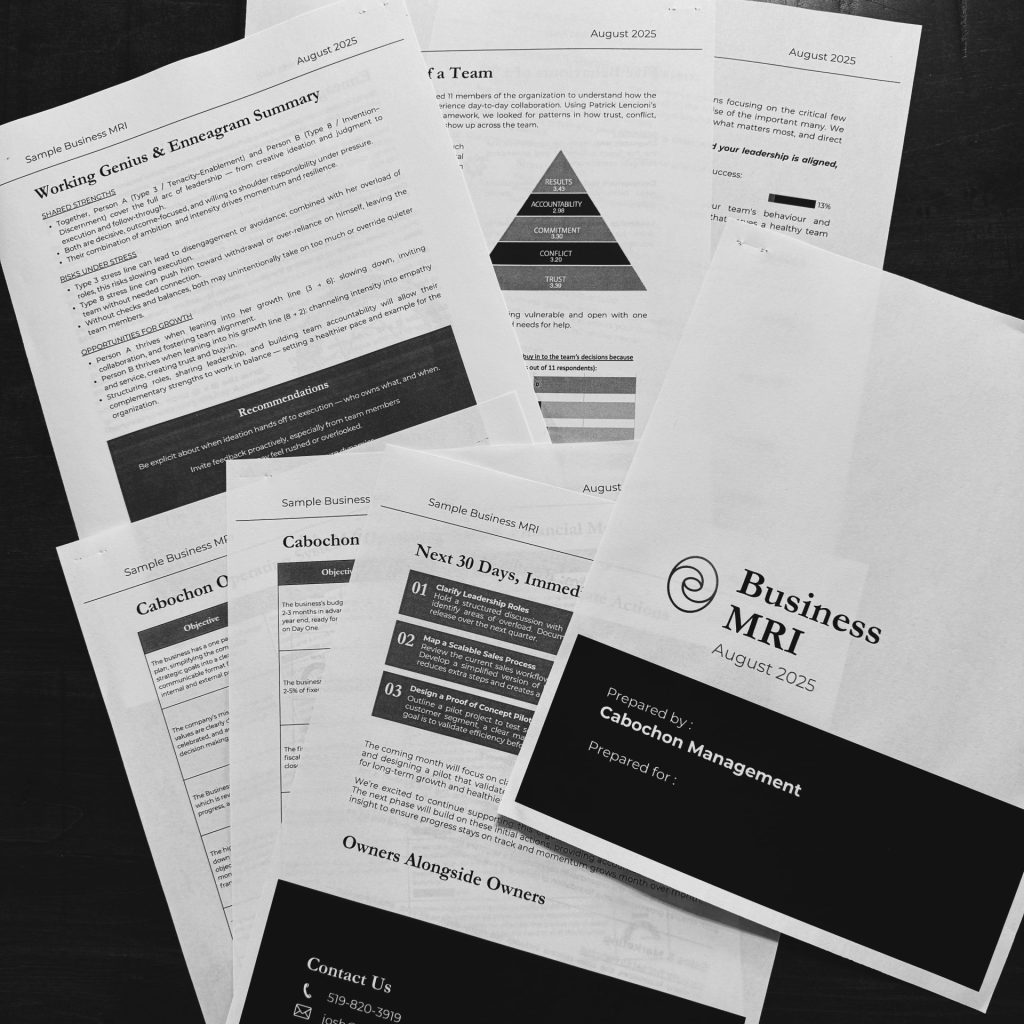“Every system is perfectly designed to get the results it gets.”
– W. Edwards Deming
I remember the first time I heard that quote. It landed like a punch in the gut.
If your business is struggling, it’s not because you’re unlucky. It’s not because the market is unfair. It’s because your business is perfectly designed to produce the exact results you’re seeing today.
That’s a hard truth. But it’s also freeing. Because if design is the issue, design is also the solution.
I’ve lost count of how many times I’ve sat across from a business owner who says something like:
- “If I just get the right HR person in here, we’ll be fine.”
- “If we upgrade to this new software, everything will smooth out.”
- “If we add a few more trucks, we’ll finally catch up.”
These are natural instincts. They’re easy to point to, and they feel like progress. You can cut a cheque, bring something new into the business, and say, “We fixed it.”
But more often than not, the same problems come back. Revenue still stalls. The team still lacks direction. The owner still feels stuck.
Why? Because most of the time, the problem isn’t technical. It’s strategic.
The Mismatch Problem
I’ve seen businesses where a junior marketing coordinator is asked to set company strategy. Or where a $100K manager is handed the reins of a $20M turnaround.
It’s not that those people aren’t capable or hardworking. It’s that they’re being asked to solve problems at the wrong level.
When roles don’t align with the size or scope of the challenge, you don’t just stall out — you risk creating more chaos.
The Small Business Dilemma
Large corporations can afford a full C-suite, layers of specialized managers, and tightly defined roles. If they need a seasoned CFO, they hire one. If they need a head of strategy, they bring one on board.
Small businesses don’t have that luxury. Every hire is a stretch. Everyone wears multiple hats. And every wrong seat on the bus costs more than just salary — it costs momentum, energy, and time.
That’s why small businesses are especially vulnerable to misalignment. You can’t afford to hire the wrong person, or expect the right person to play the wrong role.
A Different Approach
This is where fractional leadership comes in. Instead of bloating overhead with full-time salaries you can’t afford, you can bring in senior-level expertise for the exact window you need it.
But before you make that call, you need to know where the real problem is. That’s why we start with the Business MRI — a diagnostic that cuts through the noise and shows you what’s actually holding your business back.
Sometimes the solution is a fractional COO or CFO to steer the ship through a tough stretch. Sometimes it’s restructuring the team. Sometimes it’s creating clarity at the leadership level.
The point is, you stop guessing and start addressing the problem at the right level.
The Takeaway
If you’re a business owner, don’t fall into the trap of throwing technical fixes at strategic problems. New software, a fresh hire, or more equipment might look like solutions, but unless they match the level of the challenge, they won’t deliver the results you need.
Get clear on what’s actually broken. Align the right people at the right level. And remember: until you fix the design, no amount of new tools will fix the results.

